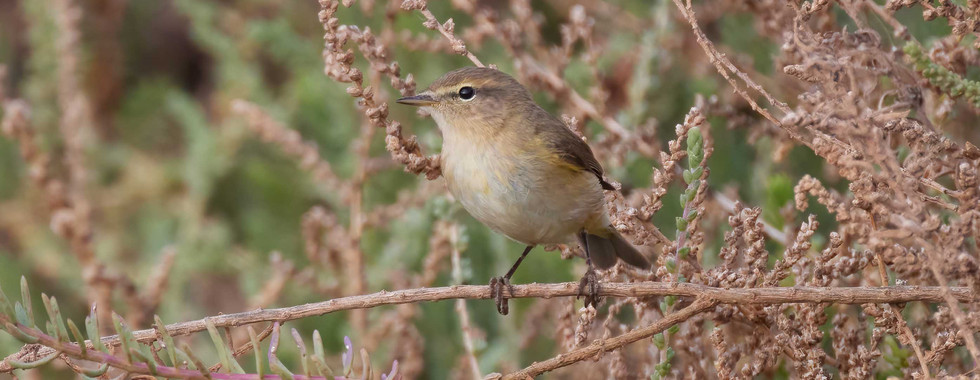Fuerteventura birding trip ~ February 2022
- Martin Roper
- Mar 8, 2022
- 7 min read
Updated: Mar 20, 2023
Fuerteventura: Strong (fuerte) and Fortune (ventura) has generally been interpreted as meaning strong winds which this, the largest of the eight Canary Islands is well known for. Arriving on the 15th and leaving behind the stormy UK weather we decided to take our chances for a few weeks birding on this big and windy Island.
Below are our recommended birding sites. Red-billed Tropicbird, Caleta 16-02-22

Caleta de Fuste (El Castillo) - Caleta de Fuste ~ Coastal path | Birdingplaces.eu
We were based here due to its central location on the island, most birding sites being within an hour's drive. The coastal path at Caleta follows a series of rocky outcrops which head north to the Airport and south to the Salinas (salt pans) and is great for wading birds. Fertile hotel gardens can also be productive while the Port area is ideal for sea-watching when the prevailing winds are North-easterly, best done in the afternoon as the resort faces east. The nearby Golf courses and Atlantico shopping centre with its small artificial lake are also worth exploring as we found out when a Red-billed tropicbird which had previously been reported at both locations dropped in at the Atlantico centre.
Sightings here: Sandwich tern, Sanderling, Grey plover, Ringed plover, Little egret, Whimbrel, Turnstone, Common sandpiper, Green sandpiper, Ruddy shelduck, Yellow- legged gull, Black-headed gull, Lesser black-backed gull, Greenshank, Spanish sparrow, Collared dove, Common swift, Swallow, House martin, Hoopoe, Laughing dove, Linnet, Chiffchaff, Red-billed tropicbird. Muralla en la playa - Google Maps
Salinas de El Carmen (Salt Pans) - Salinas del Carmen | Birdingplaces.eu
South of Caleta the area along the coastline and small fishing village next to the salt pan museum can be a good spot to explore if your passing by, its particularly productive early mornings and on late afternoon's when there are less people around. Tide times are important when considering a visit as the wader habitat is under water at high tide while the gardens around the houses are usually good for small birds and migrants. Salinas is an ideal location to combine with a visit to the Barranco de La Torre.
Sightings here: Spoonbill, Redshank, Little egret, Ringed plover, Berthelot's pipit, Grey heron, Sandwich tern, Grey shrike, Ruddy shelduck, Yellow-legged gull, Whimbrel, Chiffchaff, Trumpeter finch, Black redstart, Willow warbler, Subalpine warbler, Spanish sparrow, Collared dove. Salt Museum Salinas del Carmen - Google Maps
Barranco de La Torre - Barranco de la Torre | Birdingplaces.eu
Situated just south of Caleta and one of the best locations for birding in the area, this Barranco has been dry for quite some time, an active breeding area for critically endangered Egyptian vultures, the site used to close during the breeding season but now remains open. Access to the Barranco is from the fv2 taking the turn off for Salinas del Carmen and driving along the road Carr. del La Torre for a few Kilometres which leads down to a small beach area near the mouth of the Barranco surrounded by shrubs and Tamerisk.

This is a fantastic area for breeding Fuerteventura Chat and Warblers, parking here is recommended before continuing into the Barranco on foot, near the beach area you will find a very small pool under a tree which attracts many birds. Driving further into the Barranco is possible up to the No Entry gate, viewing from the top is also possible by continuing on the fv2 and taking a left turn at the next roundabout (signposted) but at the end of this track is a private mining company and access to the Barranco can be somewhat challenging.
Sightings here: Egyptian vulture, Barbary falcon, Raven, Swallow, House martin, Willow warbler, Great grey shrike, Chiffchaff, Spectacled warbler, Sardinian warbler, Subalpine warbler, Rock dove, Trumpeter finch, Berthelot's pipit, Fuerteventura chat, Common buzzard, Kestrel, Hoopoe, Spanish sparrow, Collared dove. 28°21'23.4"N 13°52'43.3"W - Google Maps
Barranco del Rio Cabras - Barranco de rio Cabras | Birdingplaces.eu
A large Barranco which is narrow and deep with cliffs on either side and several dams holding pools of water, located off the fv20 on the road to Antigua around 20 minute drive from Caleta, the Barranco runs West to East ending up at the coast just south of the airport. Parking close to the gates of the household waste recycle Centre (Complejo Ambiental de Zurita) head right over the plain following a track down into the Barranco. Once at the bottom left takes you towards the coast while right takes you to a series of dam walls and pools, both are worth exploring but the pools on the right are generally more fruitful.
You can also walk the top of the Barranco and gain access further on up the fv20 by typing Barranco del Rio Cabras in the sat nav, explore the Barranco at this end if you like, I didn’t this time, recent rain made it hard going, driving further along the fv430 you come to a marsh area. 28°27'45.9"N 13°57'26.9"W - Google Maps
Sighting here: Glossy ibis, Raven, Yellow-legged gull, Lesser short-toed lark, Fuerteventura chat, Rock dove, Laughing dove, Trumpeter finch, Collared dove, Spanish sparrow, African blue tit, Grey heron, Little egret, Grey shrike, Common buzzard, Egyptian vulture, Ruddy shelduck, Green sandpiper, Common snipe, White stork, Berthelot's pipit, Little ringed plover, Spectacled warbler, White wagtail, Grey wagtail, Kestrel, House martin, Swift, Swallow, Quail and Black-winged stilt. 28°28'49.9"N 13°53'50.9"W - Google Maps
Tindaya Plain and La Oliva - Tindaya plain | Birdingplaces.eu
Undoubtedly the best area to see the dessert species on the island by following the labyrinth of tracks which spread out from Montaña de Tindaya and head towards the northwest coast. The Fig tree area on the track virgen de la caridad was productive late afternoon for Houbara bustard We had several birds in this area here: 8°36'08.2"N 13°59'54.4"W - Google Maps

Courser proved a little more difficult to locate this year with three attempts before we were finally successful spotting four birds in an area that had been fruitful in the past. I think its pot luck with these guys, we had them here: 28°36'42.6"N 13°59'41.3"W - Google Maps

While Black-bellied sandgrouse were a little easier this time around, we saw around 30 at the Goat farm near to the track for La Oliva along with a pair feeding on grass near the Fig tree area where we had the Houbara bustard, we had them here: 28°36'18.9"N 13°58'20.8"W - Google Maps

From here we continued to La Oliva, an agricultural village Northeast of Tindaya which has cultivated land and attracts many of the islands common species along with migrants, a small pond at the back of the School is worth a visit we narrowly missed out on a Marbled duck here while the fertile traditional allotments in the Fimapaire valley and nearby lava fields are usually productive. 28°36'14.5"N 13°53'58.2"W - Google Maps
Sightings: Houbara bustard, Cream-coloured courser, Black-bellied sandgrouse, Raven, Common buzzard, Egyptian vulture, Spectacled warbler, Berthelot's pipit, Grey shrike, Kestrel, Lesser short-toed lark, Ruddy shelduck with 2 young, Rock dove, Collared dove, Spanish sparrow, Hoopoe, Fuerteventura chat, Linnet, Trumpeter finch, Grey heron, Swallow, Coot, Moorhen.
Betancuria, El Pinar and Barranco de Las Penitas - Las Penitas | Birdingplaces.eu
This is the old capital of Fuerteventura and is very picturesque, there’s lush vegetation and agricultural land attracting a variety of species, the area has a significant colony of Sardinian Warbler which is unusual as the dominant warbler is Spectacled. El Pinar, the only forest on the island, this picnic area and was closed while we were there due to Covid but is a good site for Atlantic canary. If accessible it’s worth exploring. Barranco de Las Penitas is another great location to visit and is only a few Kilometres from Betancuria, the Barranco can be accessed by using the small Carpark here. Aparcamiento - Google Maps
Sightings: Kestrel, Laughing dove, Great grey shrike, Spanish sparrow, Collared dove, Rock dove, Moorhen, Raven, Grey heron, Chiffchaff, Hoopoe, Common buzzard, Atlantic canary, Fuerteventura chat, Barbary partridge, Sardinian warbler, Spectacled warbler, African blue tit, Goldfinch, and House martin.
Morro Jable and Costa Calma - Morro Jable - Birdingplaces.eu Costa Calma | Birdingplaces.eu
At the Southern end of the Island the Port at Morro Jable is worth exploring while along the promenade in the area of the lighthouse a fenced off nature area is great for birds. At the site of the old abandoned Stella Canaris zoo exotic birds escaped and many return here, a great place for unusual sightings like Hadada ibis, African sacred ibis, Glossy ibis and several species of breeding parrots including Monk parakeet while the Barranco may also be worth a visit. South of Fuerteventura the resort of Costa Calma has a forest running through the middle of the town which is a great spot for a variety of birds, the area is well worth exploring.
Sightings here: Glossy ibis, Hadada ibis, African Sacred ibis, Cattle egret, Kestrel, Fuerteventura chat, Monk parakeet, Spanish sparrow, Collared dove, Greylag geese, Common sandpiper, Grey heron, House martin, Yellow-legged gull, Plain swift, Common swift, Hoopoe, Red-vented bulbul, Linnet, Chiffchaff, Goldfinch, Great grey shrike, Kestrel, Egyptian vulture and Raven. The old abandoned Stella Canaris zoo location can be found here: 28°02'59.7"N 14°19'47.9"W - Google Maps
North Track from Corraejo to El Cotillo - El Cotillo - North | Birdingplaces.eu
Picking up the coastal path in the busy resort of Corralejo we stopped off at several places including Playa del Bajo de la Burra, Playa de Majanicho, Playa Beatriz and Faro del Tostón before moving on to El Cotillo, from here Tindaya can be eached by following the track in-land. 28°44'26.8"N 13°52'17.5"W - Google Maps
Sightings here: Spoonbill, Egyptian vulture, Little egret, Kentish plover, Turnstone, Ringed plover, Sanderling, Grey plover, Dunlin, Raven, Spanish sparrow, Yellow-legged gull, Berthelot's pipit, Common sandpiper, Palid swift, Common swift.
Los Molinos Reservoir - Los Molinos reservoir | Birdingplaces.eu
We took a chance visiting here, Molinos is the biggest expanse of water on the island but unfortunately there has been drought conditions for the last few years and many of the birds have moved on, sites like Los Molinos and Catalina Garcia have been greatly affected and there was a noticeable decline in species since we last visited during 2020. Let’s hope things improve in the future. Embalse de los Molinos - Google Maps
Sightings here: Fuerteventura chat, Pintail, Greenshank, Common sandpiper, Little ringed plover, Ruddy shelduck, Swallow, Swift, Egyptian vulture, House martin, Yellow-legged gull, Trumpeter finch, Spanish sparrow, Black-bellied sandgrouse.
Other sightings included Muscovy duck, Barbary ground squirrel, Rabbit, Red rock crab, Ray, Atlantic lizard, Plain tiger, Painted lady and Monarch butterflies, Blue emperor dragonfly, Egyptian grasshopper and some very friendly local Goats.
Full species list link: Fuerteventura bird list 2022
























































































































Nice blog m8 love reading about your birding adventures
Hi Martin just came across your Blog after looking on youtube for Birding some superb photos Thanks for sharing .We will be going to the Canaries in January not decided which part yet but looking forward to it Thanks again